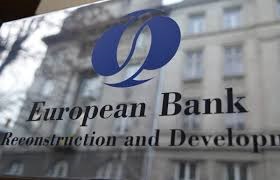Banks, EU – Baltic States, Financial Services, Good for Business, Latvia
International Internet Magazine. Baltic States news & analytics
Tuesday, 16.04.2024, 09:41
Latvia takes next step toward a pan-Baltic capital market
 Print version
Print version |
|---|
Similar to the other Baltic states, Latvia is currently
rated as a frontier market by several index providers due to its size and
limited liquidity. Assets under management directed to frontier markets total 75 bn USD compared to 1.5 trillion USD allocated to emerging markets.
A pan-Baltic single index approach would facilitate greater
capital inflow and further raise the profile of the region as an investment
destination, and potentially trigger an emerging market designation.
The recommendations identify several pan-Baltic synergies
and initiatives that could lead to a regional classification and underscore key
actions the Ministry of Finance can take to promote the development of capital
markets in the region.
Suggested solutions include encouraging state-owned
enterprises (SOEs) and private companies to tap debt and equity capital markets
to address the limited investment product availability and liquidity, the
further integration of the three Baltic markets to better reflect international
investors’ interests, and the development of private and public partnership
solutions for enhancing access to finance for SMEs in the Baltic region.
The success of the Port of Tallinn’s IPO in Estonia and
energy companies in Lithuania have captured investor interest and highlight the
need for Latvia to work on its own solutions and policies. A further SOE policy
review is expected to be initiated by the Latvian authorities this year under
the SRSS and implemented by the EBRD.
Valdis Dombrovskis, European Commission Vice President,
explained that today’s report shows that by connecting their capital markets
and developing them together, Latvia, Lithuania and Estonia will unleash their
full potential for more investment and economic growth. “This cooperation sends
a clear message to global investors that the Baltics are open for investment. Local
and regional capital markets are the foundation of the EU Capital Markets
Union. The Commission will continue to strongly support cross-border
initiatives such as these in the Baltic region,” he said.
Pierre Heilbronn, EBRD Vice President, Policy & Partnerships,
said that the initiative shows how smaller jurisdictions can enhance their
domestic capital markets through an integrated approach. He noted, “All Baltic
governments, together with the European Commission, EBRD and Nasdaq, have
expressed their interest in arriving at a single pan-Baltic classification by
leading index providers,” and welcomed MSCI’s recent statement that a single
market classification may be possible for the Baltics.
Jānis Reirs, the Minister of Finance
for Latvia, stressed the importance of regional cooperation in overcoming the
constraints each countries face due to their limited size. He added,
“Functioning capital markets are crucial for the economy as they diversify the
enterprises’ financing sources, enable us to grow, fund expansion and create
new jobs. The ongoing cooperation among the Baltic states proves that with
joint efforts it is possible to continue successfully the development of
capital markets in the region, attracting more attention of foreign investors.”
The joint pan-Baltic initiative was launched in 2017 with the goal of harmonising regulations and dismantling investment barriers to attract foreign investment.
The EBRD has been working in the Baltic states since 1991 and has invested over 2.2 bn EUR in 258 projects in Estonia, Latvia and Lithuania. Strengthening private enterprises and developing the capital market are among the Bank’s priorities in these countries.








 «The Baltic Course» Is Sold and Stays in Business!
«The Baltic Course» Is Sold and Stays in Business!

